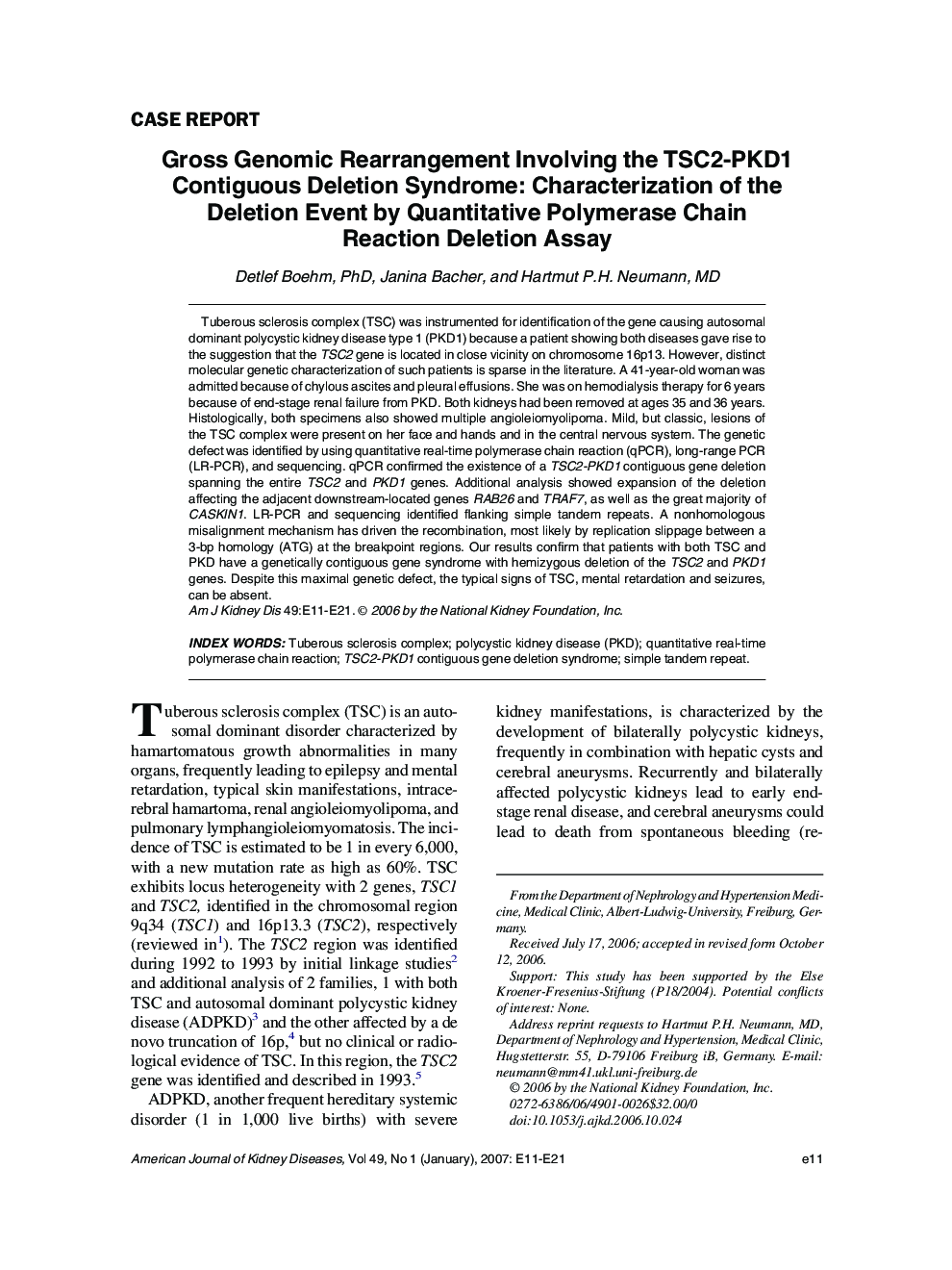| کد مقاله | کد نشریه | سال انتشار | مقاله انگلیسی | نسخه تمام متن |
|---|---|---|---|---|
| 3851334 | 1598377 | 2007 | 11 صفحه PDF | دانلود رایگان |
عنوان انگلیسی مقاله ISI
Gross Genomic Rearrangement Involving the TSC2-PKD1 Contiguous Deletion Syndrome: Characterization of the Deletion Event by Quantitative Polymerase Chain Reaction Deletion Assay
دانلود مقاله + سفارش ترجمه
دانلود مقاله ISI انگلیسی
رایگان برای ایرانیان
کلمات کلیدی
موضوعات مرتبط
علوم پزشکی و سلامت
پزشکی و دندانپزشکی
بیماریهای کلیوی
پیش نمایش صفحه اول مقاله

چکیده انگلیسی
Tuberous sclerosis complex (TSC) was instrumented for identification of the gene causing autosomal dominant polycystic kidney disease type 1 (PKD1) because a patient showing both diseases gave rise to the suggestion that the TSC2 gene is located in close vicinity on chromosome 16p13. However, distinct molecular genetic characterization of such patients is sparse in the literature. A 41-year-old woman was admitted because of chylous ascites and pleural effusions. She was on hemodialysis therapy for 6 years because of end-stage renal failure from PKD. Both kidneys had been removed at ages 35 and 36 years. Histologically, both specimens also showed multiple angioleiomyolipoma. Mild, but classic, lesions of the TSC complex were present on her face and hands and in the central nervous system. The genetic defect was identified by using quantitative real-time polymerase chain reaction (qPCR), long-range PCR (LR-PCR), and sequencing. qPCR confirmed the existence of a TSC2-PKD1 contiguous gene deletion spanning the entire TSC2 and PKD1 genes. Additional analysis showed expansion of the deletion affecting the adjacent downstream-located genes RAB26 and TRAF7, as well as the great majority of CASKIN1. LR-PCR and sequencing identified flanking simple tandem repeats. A nonhomologous misalignment mechanism has driven the recombination, most likely by replication slippage between a 3-bp homology (ATG) at the breakpoint regions. Our results confirm that patients with both TSC and PKD have a genetically contiguous gene syndrome with hemizygous deletion of the TSC2 and PKD1 genes. Despite this maximal genetic defect, the typical signs of TSC, mental retardation and seizures, can be absent.
ناشر
Database: Elsevier - ScienceDirect (ساینس دایرکت)
Journal: American Journal of Kidney Diseases - Volume 49, Issue 1, January 2007, Pages e11-e21
Journal: American Journal of Kidney Diseases - Volume 49, Issue 1, January 2007, Pages e11-e21
نویسندگان
Detlef PhD, Janina Bacher, Hartmut P.H. MD,